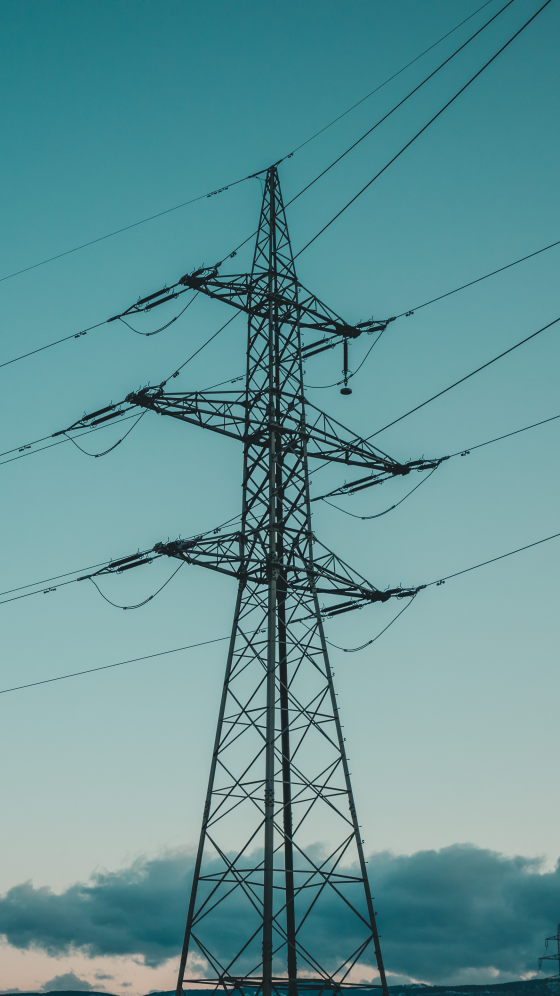expected welfare gains had TSOs in the Core region made 70% of capacity available for cross-zonal electricity trade in 2024.
Transmission capacities for cross-zonal electricity trade and grid congestion management
2025 Monitoring Report
The report examines the role of cross-zonal electricity trade in shaping a more integrated and efficient EU electricity market. It:
Illustrates the value of cross-zonal electricity trade in enabling efficient price formation and enhancing system flexibility in the EU, supporting the energy transition and protecting consumers from price volatility.
Tracks progress, challenges and potential benefits in implementing the minimum 70% requirement, while underscoring the need for timely action by transmission system operators (TSOs) to realise these gains.
Assesses ongoing challenges related to managing grid congestion and the growing reliance on costly remedial actions by TSOs across the EU.
Unlocking additional cross-zonal electricity trade
The 2019 Clean Energy Package introduced a legal requirement on EU electricity TSOs to make at least 70% of their physical transmission capacity available for cross-zonal trade (by the end of 2025 at the latest), on all lines of cross-zonal relevance. This ensures that enough transmission capacity is allocated for cross-zonal trade with neighbours and mitigates its discrimination over internal trade.
ACER estimates that the EU electricity market could have gained €580 million in welfare in 2024 through more electricity trading, had the Core region TSOs (from 13 central EU Member States) implemented the 70% requirement. Instead, due to the partial fulfilment of the 70% rule, only 40% of this potential gain was realised.
What are ACER’s findings?
ACER’s 2025 report on cross-zonal capacities and congestion management finds:
Untapped value of additional cross-zonal trade: Persistent price differences between bidding zones highlight the need for more cross-zonal trade to unlock further market benefits.
The 70% requirement ensures that domestic electricity flows are not prioritised over cross-border trade, mitigates price spikes (such as those seen in summer 2024 across South-East Europe) and brings significant additional welfare to EU electricity markets.
Progress, but the ‘end-2025 deadline’ is at risk: While TSOs are progressing towards fulfilling the 70% requirement, implementation delays could prevent some of them from meeting the requirement by the legal deadline at the end of 2025. In 2024, Core TSOs made available on average 54% of the physical capacity on the most congested lines.
Growing grid congestion: Delays in grid reinforcement continue to widen the gap between grid development and system needs, ensuring continued reliance on costly remedial actions to relieve grid congestion. In 2024, EU TSOs spent €4.3 billion on 60 TWh (comparable to Austria’s annual electricity consumption) of remedial actions to manage EU power grid congestion.
ACER recommendations
This ACER report underlines the importance of cross-zonal trade as a key source of power system flexibility, helping to shield consumers from price volatility and supporting the integration of renewables. ACER recommends:
TSOs and nominated electricity market operators (NEMOs) to continue improving how available cross-zonal capacity is calculated and allocated. For example, by refining the fallback process in the day-ahead capacity calculation process of the Core region and by applying flow-based allocation in pan-European intraday auctions.
Member States and TSOs to relieve highly congested network elements by prioritising the 70% requirement and investing in grid-enhancing technologies (non-wire alternatives).
TSOs to promptly implement the EU framework for congestion management to ensure grid congestion is addressed efficiently and in a coordinated manner.
Transmission capacities for cross-zonal electricity trade and grid congestion management

Highlights
-
€580m
-
147
severe price spikes potentially avoided in South-East Europe in summer 2024 if 70% capacity had been offered.
-
€4.3bn
cost of managing grid congestion in the EU in 2024 (amounting to 60 TWh, comparable to Austria’s power demand).
Report
ACER’s 2025 Monitoring Report on cross-zonal capacities and congestion management:
- quantifies the value of cross-zonal trade in the EU electricity market;
- assesses progress in meeting the minimum 70% requirement in the EU.
Infographic
Interested in the main highlights of the report?
Dashboard
This dashboard offers access to the following data:
- general indicators on cross-zonal trade;
- volume and cost of managing grid congestion across the EU; and
- progress in meeting the 70% requirement by capacity calculation region.
Additional information
- Access the underlying datasets.
